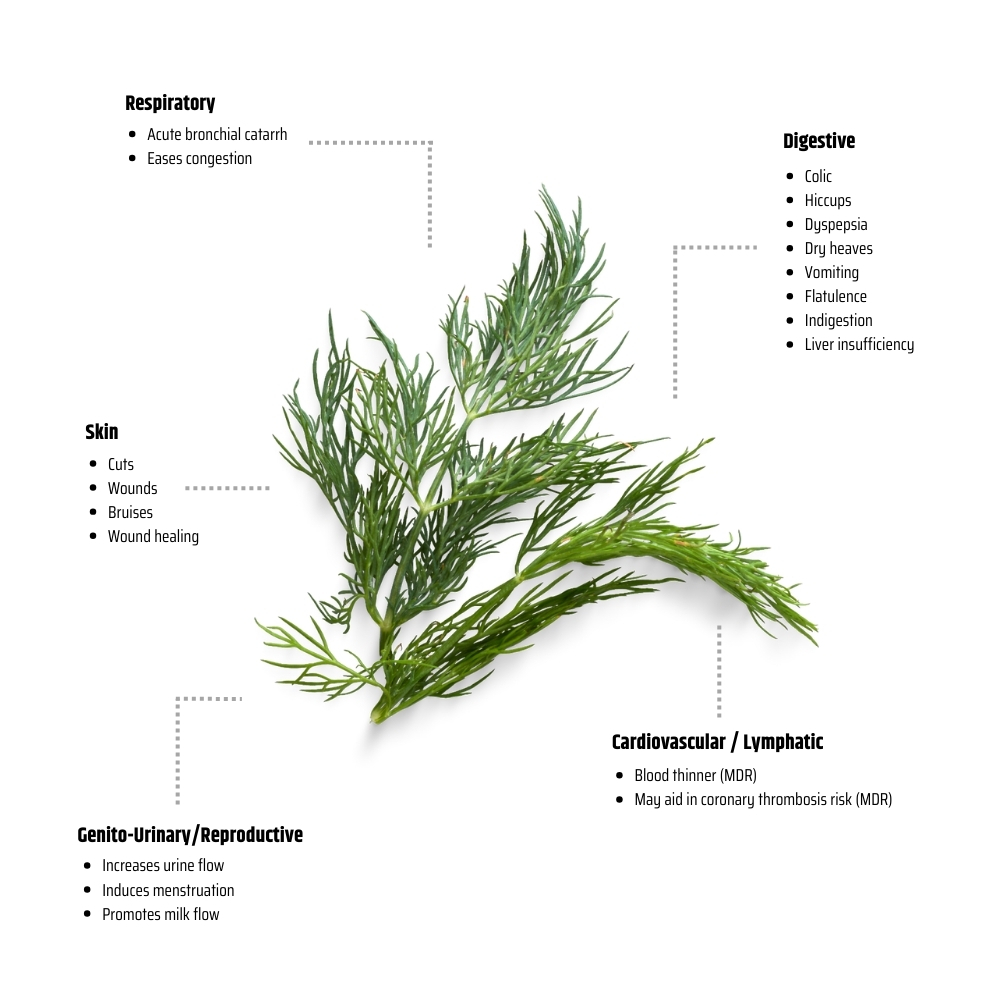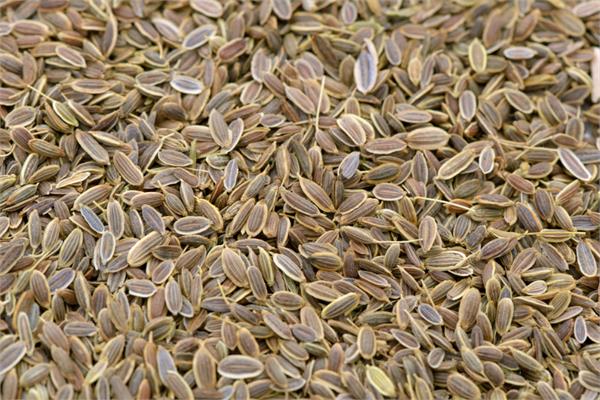
Australian Owned and Operated We have been proudly running for over 30 years

100% Pure & Natural Our products are sourced from the highest quality suppliers and growers from around the world

Not Tested on Animals None of our products are tested on animals

Vegan Friendly Our products are plant based and vegan friendly
Dill Seed
Anethum graveolens
Source: Seeds
Origin: Hungary
Energetics: Yang
Extraction Method: Steam Distilled
Scent: A herbaceous, earthy and fresh aroma.
Blends Well With: Black Pepper & Citrus oils.
About
Other than the collagen in our skin, elastin is a key component and dill seed oil is said to activate skin fibroblasts (type: tropoelastin) therefore increasing the structural integrity of skin.
Historical Snippets
The ancient Greeks and Romans held a lot of superstitions with Dill. The twig was kept on hand as a protective barrier from curses and the seed was often used in magical potions to protect themselves against the ill effects of witchcraft. Medically the Aboriginals would use the herb for treating insomnia, colds, fevers, flatulence and respiratory ailments. The antimicrobial properties of Dill have also rendered it a great food preservative and preparation of pickles.
How To Use
Diffuse: Add a few drops to a diffuser to disperse around the room
Topically: Dilute essential oil with any carrier oil at a 2.5% ratio. This equates to 2.5ml essential oil/oils in total mixed with 100ml of chosen carrier oil. 1ml of essential oil is approximately 20-22 drops of oil. Decant into a roller or glass bottle with eye dropper to apply easily or a larger bottle if using for massage. Please note this dilution rate is for adults and children over the age of 6. More information on children and essential oils is on our blog page. Essential Oils should not be used directly on the skin without mixing first with a carrier oil
Inhalation: Add 1-2 drops essential oil to a tissue and inhale at a distance while ensuring that the oil does not come into direct contact with the skin. Alternatively, you can smell the oil directly from the bottle.
Shelf Life
Our freshly decanted Dill essential oil will last for 2-3 years minimum from when you open your amber glass bottle if stored correctly.
Primary Storage Considerations: Keep away from direct light (U.V. radiation). Keep in the amber glass bottle with lid tightly closed. Only open when you need to and decant into a smaller "working" amber glass bottle if possible (and label so you know what is in it). This is to reduce oxidation.
Secondary Storage Considerations: Keep in a refrigerator at around 4 degrees celsius.
Safety
General
Some essential oils may cause photosensitivity to the skin - Use diluted in Jojoba or other complete carrier oil.
Do not ingest essential oils.
Do not apply to eyes, sensitive areas or mucous membranes.
The information on this website is not intended to be used in the diagnosis, treatment or mitigation of any physical or mental illness. Ahimsa Oils offer no advice or recommendations only general information. No therapeutic claims are made within.
Pregnant women, nursing mothers and children should not use essential oils without first consulting an appropriately trained healthcare practitioner.
The statements on this website have not been evaluated by the TGA. David Bosley however worked for a long period in consultation with the TGA to ensure correct labelling with reference to the Ahimsa Oil product range.
Specific
Hazards: Drug interaction; skin sensitization if oxidized.
Cautions: Old or oxidized oils should be avoided.
Precaution: May act as an abortifacient and that there is a risk of hepatotoxicity and pephrotoxicity when using the oil. They indicate that Dill Seed Oil should be avoided during pregnancy and breastfeeding.
Dermal maximum: 1.4%.
The IFRA guideline is 1.2% for skin sensitization, but only for (-)-carvone. The dermal limit for (+)-carvone is 23%, for toxicity. Because of its limonene content, it's recommended that oxidation of dill seed oil should be avoided by storage in a dark, airtight container in a refrigerator. The addition of antioxidants is reccomended.
References
Sheppard-Hanger, Sylla. The Aromatherapy Practitioner Reference Manual: Atlantic Institute of Aromatherapy, 1999. Print.
Tisserand, R., & Young, R. (2014). Essential Oil Safety: Second edition.



 Available for $100 orders and over
Available for $100 orders and over


@PLEMA@360x240.jpg)


